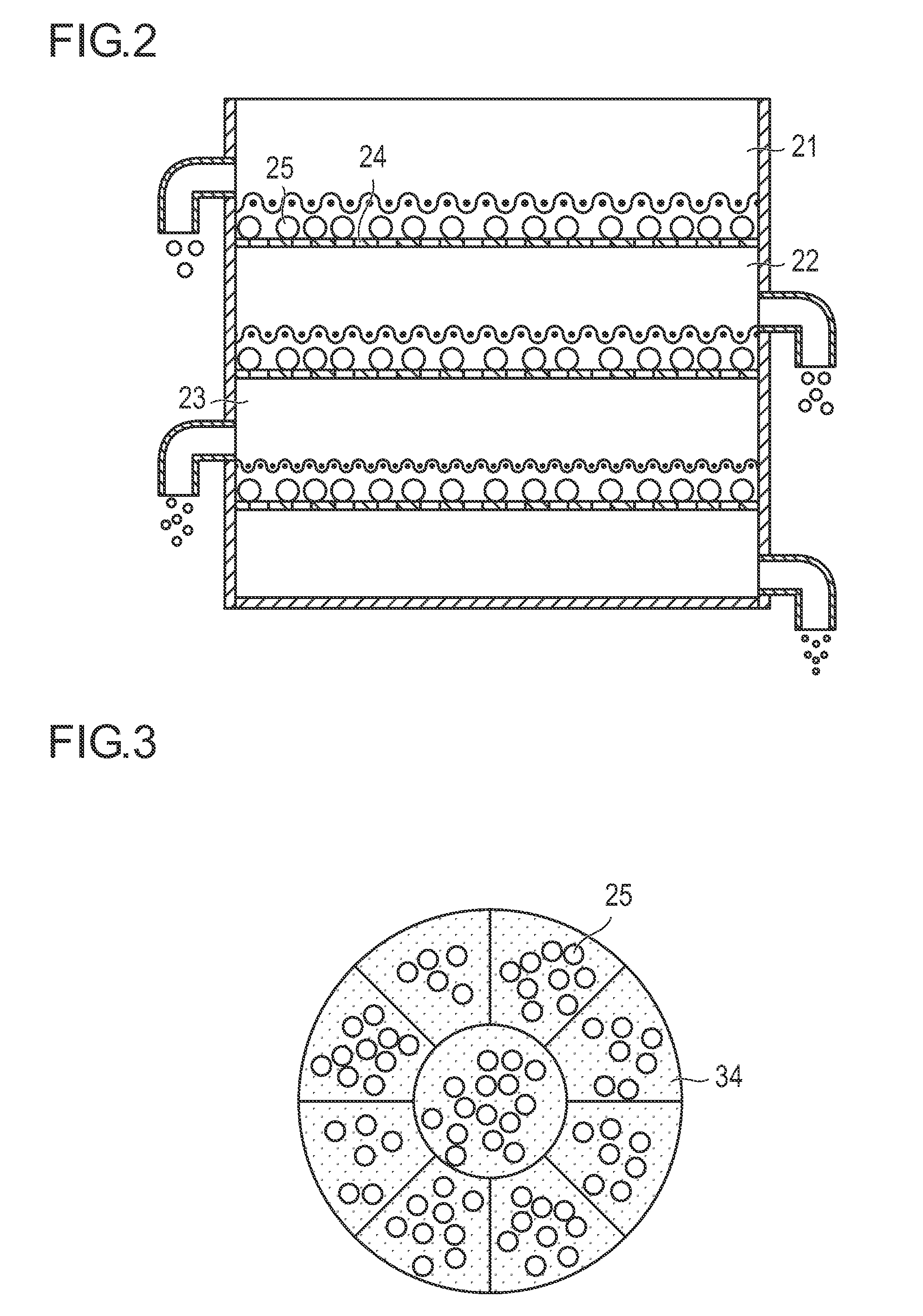Method of producing absorbent resin
a technology of absorbent resin and water, which is applied in the direction of filtration separation, separation processes, instruments, etc., can solve the problems of increased cost, increased production cost, and decreased physical properties, and achieve the effect of reducing the deviation of physical properties during continuous production or deteriorating physical properties resulting from continuous operation
- Summary
- Abstract
- Description
- Claims
- Application Information
AI Technical Summary
Benefits of technology
Problems solved by technology
Method used
Image
Examples
example 1
[0281]The following operation was carried out according to Example 1 of Patent Literature 30 (WO 2010 / 032694 A).
[0282]That is, as illustrated in FIG. 1, continuous production was achieved by using a continuous production facility for a water absorbent resin (production capacity: 1500 [kg / hr]), which includes a polymerization step (static polymerization on a belt), a gel grain refining (crushing) step, a drying step, a pulverization step, a classification step (classification step 1), a surface crosslinking step (a mixing step for a surface crosslinking agent, a heating step, and a cooling step), a particle size regulation step (classification step 2), a classification step 3, and transport steps that connect the respective steps. Meanwhile, the classification step 1, the surface crosslinking step, the classification step 2 and the classification step 3 described above were connected by pneumatic transport (dry air having a dew point of 10° C., or heated air at 60° C.)
[0283]Specifica...
example 2
[0291]The same operation as that employed in Example 1 was carried out, except that the stretch tension (tension) of the metal sieve mesh of the classification step 3 used in Example 1 described above was changed to 40 [N / cm], and thus a water absorbent resin (2) was obtained.
[0292]While the water absorbent resin (2) obtained was continuously produced, sampling was carried out for every 1 ton, and a performance analysis was carried out for 20 tons of the water absorbent resin. The number of samples obtained was 20 samples, and the average CRC, AAP and SFC values were 30.2 [g / g] (CRC), 24.6 [g / g] (AAP), and 38[×10−7 cm3·s·g−1] (SFC), respectively. A slight decrease in the SFC was observed, but the decrease was at a level without any problems, and the SFC value was stabilized later. The details of the performance of the water absorbent resin (2) obtained are presented in Table 1. Meanwhile, even after a lapse of 365 days (12 months), there was neither a deterioration of physical prope...
example 3
[0293]The same operation as that employed in Example 1 was carried out, except that the stretch tension (tension) of the metal sieve mesh of the classification step 3 used in Example 1 described above was changed to 45 [N / cm], and thus a water absorbent resin (3) was obtained.
[0294]While the water absorbent resin (3) obtained was continuously produced, sampling was carried out for every 1 ton, and a performance analysis was carried out for 20 tons of the water absorbent resin. The number of samples obtained was 20 samples, and the average CRC, AAP and SFC values were 30.3 [g / g] (CRC), 24.7 [g / g] (AAP), and 40[×10−7 cm3·s·g−1] (SFC), respectively. A slight decrease in the SFC was observed, but the decrease was at a level without any problems, and the SFC value was stabilized later. The details of the performance of the water absorbent resin (3) obtained are presented in Table 1. Meanwhile, even after a lapse of 365 days (12 months), there was neither a deterioration of physical prope...
PUM
| Property | Measurement | Unit |
|---|---|---|
| surface roughness | aaaaa | aaaaa |
| temperature | aaaaa | aaaaa |
| dew point | aaaaa | aaaaa |
Abstract
Description
Claims
Application Information
 Login to View More
Login to View More - R&D
- Intellectual Property
- Life Sciences
- Materials
- Tech Scout
- Unparalleled Data Quality
- Higher Quality Content
- 60% Fewer Hallucinations
Browse by: Latest US Patents, China's latest patents, Technical Efficacy Thesaurus, Application Domain, Technology Topic, Popular Technical Reports.
© 2025 PatSnap. All rights reserved.Legal|Privacy policy|Modern Slavery Act Transparency Statement|Sitemap|About US| Contact US: help@patsnap.com



